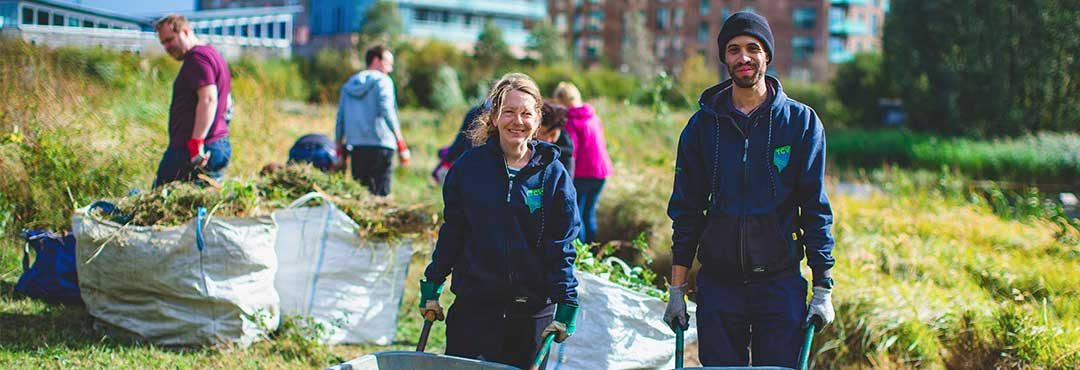Dulwich Upper Wood is managed by Urban Ecology as a local nature reserve (LNR), educational facility, research area and a place of recreation, with grant aid from the London Borough of Southwark. The wood is open at all times and has a full-time warden and interpretive office situated on the site.
We hope to replace the current office with a new building of traditional green oak construction linked into the main access route around the wood. The Bridge House Estate Fund has funded the initial construction works.
The Woodland Food area at Dulwich Upper Wood LNR originated from ideas to establish an area in the Woodland that firstly demonstrated food growing in shaded areas & secondly assisted in showing where our food comes from.
Volunteering at Dulwich Upper Wood
Volunteer days are held on Tuesdays. Staff and volunteers maintain the woodland habitats with the tasks varying according to the season. Contact Michael Williams on 020 8761 6230 or dulwich@tcv.org.uk for times and details.
Contact, access and opening details
The wood is open at all times and has a full-time warden and interpretative wooden hut situated on the site.
Dulwich Upper Wood can be found at:
Farquhar Road
London SE19
The site warden is Michael Williams.
Telephone: 020 8761 6230
Email: dulwich@tcv.org.uk
Site history
The present-day shape and composition of Dulwich Upper Wood can be traced back to the Great North Wood and the rapid land-use changes in the Crystal Palace area since the mid-1800s. From the 12th to the 15th century, the Manor of Dulwich, the area which today contains the wood, belonged to the Abbot of Bermondsey. The Manor stretched for more than two miles from Herne Hill to the southern tip of Sydenham Ridge and was mostly covered by mixed Oak woodland – part of the Great North Wood which then extended from New Cross to Croydon.
When Henry VIII dissolved the monasteries in 1542 he had the Dulwich Estate surveyed. In 1605 the Manor was sold to Edward Alleyn who later set up the College of God’s Gift which today owns Dulwich Upper Wood. Within the wood lies tow old woodland boundaries – a line of ancient coppiced and pollarded trees and a ditch – marking subdivisions of the Great North Wood.
In 1852 the Great Exhibition (The Crystal Palace) in Hyde Park was re-erected on the ridge of Sydenham Hill. With the Crystal Palace came the High Level Railway Station and residential roads. It was at this time that eight large houses with gardens were built along the east side of Farquhar Road.
In 1936 the Crystal Palace burnt down and the area went into decline. The High Level Railway Station fell into disuse and was eventually demolished, with prefab houses being erected on the site.
Some of the Victorian houses were bombed during World war II (1939 – 1945), others were neglected and had to be knocked down. By 1960, most of the site was overgrown and only number 18 Farquhar Road was still lived in. The basements of the houses can still be seen today and are an important feature of the wood.
In 1981 the Dulwich Society, together with the GLC and the London Borough of Southwark, arranged for the Trust for Urban Ecology (then the Ecological Parks Trust) to manage the wood as a nature park. Spinney Gardens Housing Estate was built in 1986 with Bowley Lane linking it to the Farquhar Road. This link road cut through the southern section of the wood separating a small triangle of land from the rest of the park.
Since 1988 a number of improvements have been made to the site to enhance wildlife value, improve educational facilities and disabled access.

